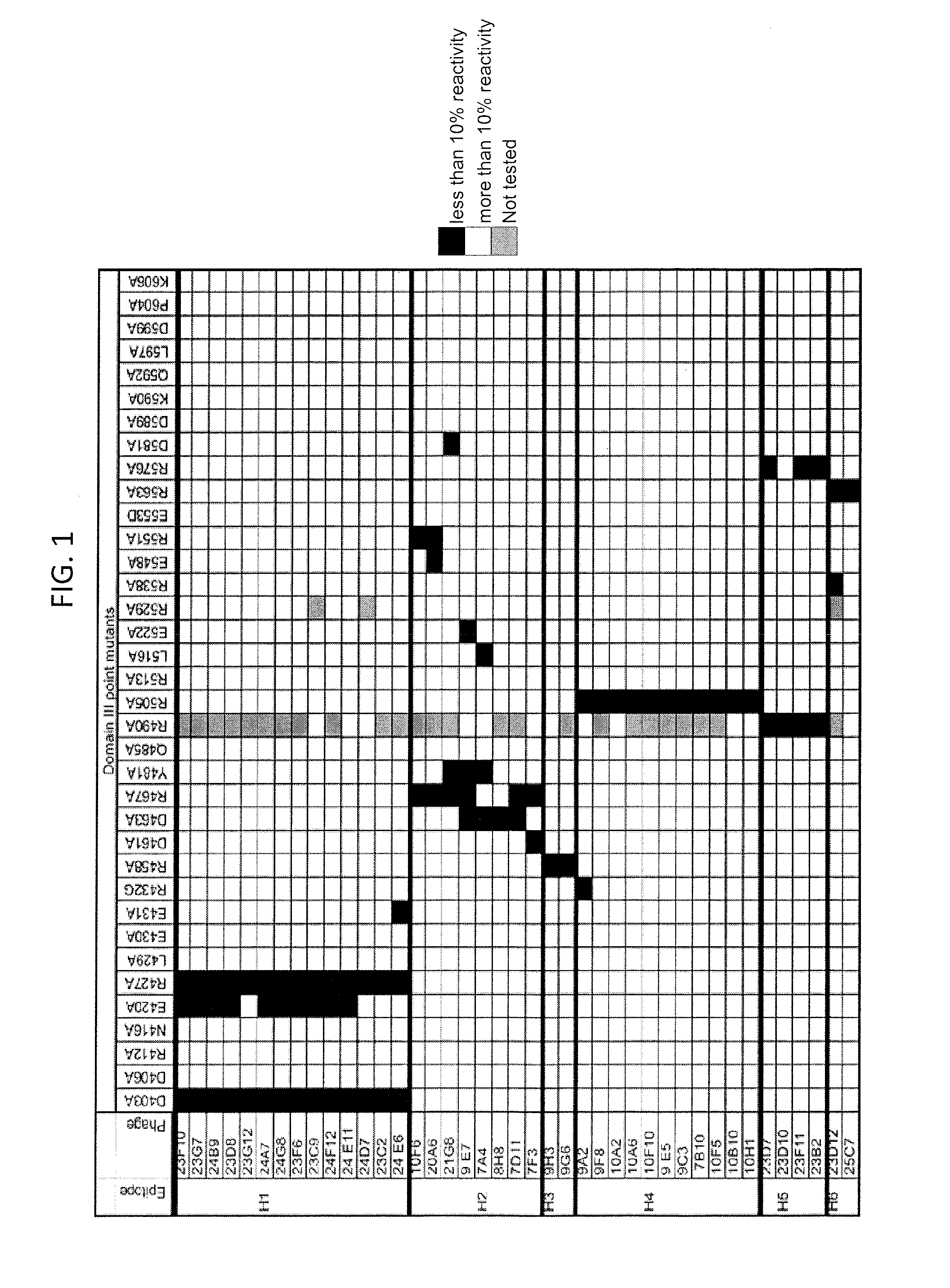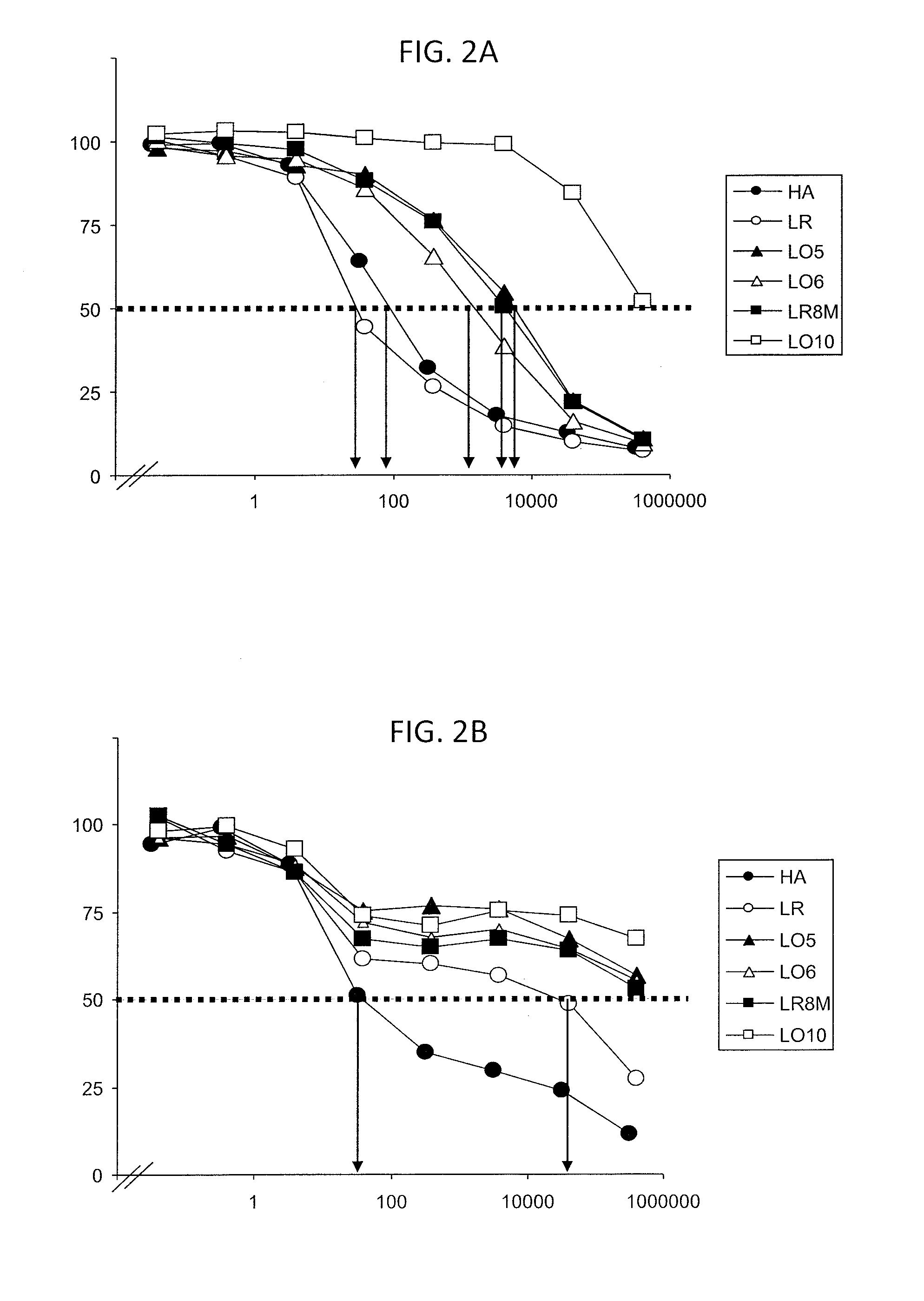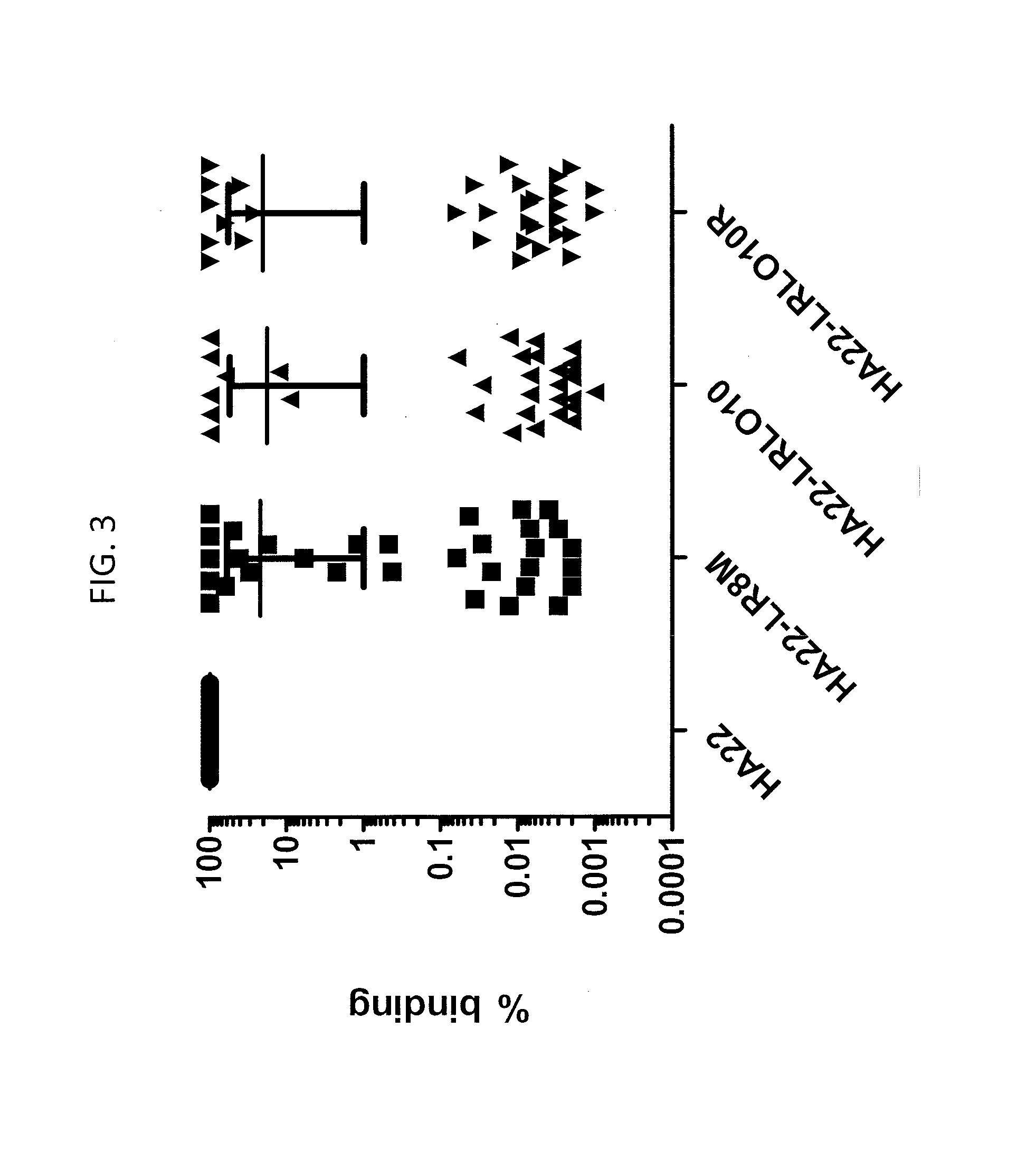Pseudomonas exotoxin a with less immunogenic b cell epitopes
a technology of pseudomonas exotoxin and b cell epitope, which is applied in the direction of peptides, drug compositions, peptides, etc., can solve the problems of reducing the effectiveness of pe for treating disease, e.g., cancer, and being highly immunogenic to pe, and achieve the effect of reducing the level of antibodies
- Summary
- Abstract
- Description
- Claims
- Application Information
AI Technical Summary
Benefits of technology
Problems solved by technology
Method used
Image
Examples
example 1
[0141]This example demonstrates the isolation and sequencing of human ScFv specific for PE38.
[0142]Blood samples were obtained from 6 patients who were treated with different recombinant immunotoxins (RITs) containing PE38 (Table 1). RNA was isolated from blood samples using PAXGENE Blood RNA Kits (PreAnalytiX GmbH, Hombrechtikon, Switzerland). First strand cDNA was synthesized from RNA using primers with the appropriate constant region (Table 2). Single bands of the correct size for VH and Vκ cDNA were obtained by using first strand cDNA as template. VH and VL fragments were amplified individually in three steps. Restriction enzyme site and linker were added into the fragment. 100 ng of the VH and VL fragments were combined in a Splicing by Overlapping Extension Polymerase Chain Reaction (SOE-PCR) for scFv formation. The scFv fragment was digested with Nco I and Not I, and subcloned into pCANTAB 5E digested with the same enzymes to construct a scFv library.
TABLE 1Rate ofpositiveLib...
example 2
[0145]This example demonstrates the location of human B cell epitopes.
[0146]LMB-9 contains both domains II and III of PE. To identify the phage which only binds to domain III, the binding of each clone to HA22-LR, which only had domain III and lacks domain II, was measured. Fifteen of the 56 phage clones could not bind to HA22-LR, indicating that the epitopes recognized by these 15 phage clones were located on domain II. The remaining 41 phage clones were used to identify the residues that make up the B-cell epitopes in domain III by measuring their binding to 36 substituted proteins in which individual amino acids on the surface of domain III of the protein were changed from a large bulky amino acid to alanine or glycine. These substitutions eliminated the large bulky side chains that are involved in antibody recognition and binding. The data are shown in FIG. 1 where clones with poor binding (<10%) are shown in black cells, and substituted proteins with normal reactivity are shown...
example 3
[0149]This example demonstrates the production of a low antigenic recombinant immunotoxin (RIT) for humans.
[0150]The identification of individual residues that were involved in binding to human antisera was used to design and construct immunotoxins with substitutions that eliminated reactivity with the human anti-sera yet retained cytotoxic activity and could be produced in sufficient amounts to be useful. In most cases, residues were replaced with alanine, because its small side chain reacts poorly with antibodies and it usually does not affect protein folding. Serine was also used to substantially avoid an especially hydrophobic surface.
[0151]Based on the information in the epitope mapping studies, substitutions selected from the different amino acids that destroyed the binding of the human Fvs to domain III of HA22-LR were combined. The substitutions are shown in Table 4 below. LRO5 had all the substitutions present in HA22-LR-8M (406A, 432G, 467A, 490A, 513A, 548S, 590S, 592A) a...
PUM
| Property | Measurement | Unit |
|---|---|---|
| nucleic acid | aaaaa | aaaaa |
Abstract
Description
Claims
Application Information
 Login to View More
Login to View More - R&D
- Intellectual Property
- Life Sciences
- Materials
- Tech Scout
- Unparalleled Data Quality
- Higher Quality Content
- 60% Fewer Hallucinations
Browse by: Latest US Patents, China's latest patents, Technical Efficacy Thesaurus, Application Domain, Technology Topic, Popular Technical Reports.
© 2025 PatSnap. All rights reserved.Legal|Privacy policy|Modern Slavery Act Transparency Statement|Sitemap|About US| Contact US: help@patsnap.com



